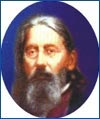Paullinia Sorbilis ; Brazilian Cocoa. Sapindacea.
A climbing shrub, native to Brazil, the seeds of which contain Caffeine, and are used by the aborigines as a beverage.
Alcoholic solution of the dried paste made from the seeds.
Introduced by Gavrelle, who found it useful “in diarrhoea of phthisis, sick headache, paralysis, tedious convalescence, and as a general tonic”. –U. S. D.
Proving by Macdowell, see Allen’s Encyclopedia, vol. 4, p. 511.
CLINICAL AUTHORITIES.
– Headache, Bradley, Hom. Rev., vol. 16, p. 504 ; Megrim, Raue’s Rec., 1873, p. 34 ; Palliative use in megrim, Müller, Trinks, B. J. H., vol. 21, p. 20, 284 ; Diarrhoea, dysentery, Raue’s Rec., 1873, p. 34.
MIND.
Gayety ; extravagant behavior.
Mental hyperesthesia ; intellectual excitement.
INNER HEAD.
Sick headache in persons who have used tea and coffee to excess, or in whom nervous headaches, followed by vomiting, are excited by any error in diet or depression of mind.
Frequent attacks of sick headache.
Megrim.
OUTER HEAD.
Throbbing, congestive headache after excessive use of liquor.
SIGHT AND EYES.
Persistent twitching of eyelids.
APPETITE, THIRST, DESIRES, AVERSIONS.
Loss of appetite.
STOOLS AND RECTUM.
Profuse, green, odorless, mucous stools. θ Infantile diarrhoea.
Summer complaints of children ; diarrhoea from teething ; diarrhoea and vomiting from improper food.
Cholera infantum.
Chronic diarrhoea, nearly to marasmus, in a child.
Diarrhoea of phthisis.
URINARY ORGANS.
Spasm of the bladder.
HEART, PULSE AND CIRCULATION.
Diminution of the heart-beats.
NERVES.
Restlessness.
Nervousness and weariness.
Neuralgia.
Rheumatic neuralgia.
Reduced vital powers ; grief ; depression of spirits ; anorexia ; nervous hemicrania.
Convalescence from prostrating diseases.
Paralysis.
SLEEP.
Unpleasant and uncontrollable sleepiness, drowsiness and heaviness of head, with flushed face, in persons of sedentary habits, after eating.
Sleeplessness.
ATTACKS, PERIODICITY.
Frequent attacks of sick headache.
SENSATIONS.
Rheumatic neuralgia.
Throbbing, congestive headache.
Twitching : of eyelids.
Spasm of bladder.
TISSUES.
Chlorosis.
SKIN.
Urticaria ; prurigo.
RELATIONS.
Compare : Agar. (in twitching of eyelids) ; Ignat., Nux vom., especially latter, in sick headache, etc.
“NOTE:
PLAIN TEXT : LOWEST & DESIGNATES AN OCCASIONALLY CONFIRMED SYMPTOMS;
Plain blue: MORE FREQUENTLY CONFIRMED;
BOLD BLUE : SYMPTOMS VERIFIED BY CURES;
BOLD RED : REPEATEDLY VERIFIED;
$BOLD ITALIC RED$ : AN APPROVED CHARACTERISTIC;
θ : STANDS BETWEEN CURED SYMPTOM & PATHOLOGICAL CONDITION;
** : OBSERVED FROM OLD SCHOOL OR NEW SCHOOL;
toxic : Toxicology;
r : Right;
l : Left;
< : Increased or aggravation;
> : Decrease or amelioration;
^^ : Symptoms observed only on the sick “

